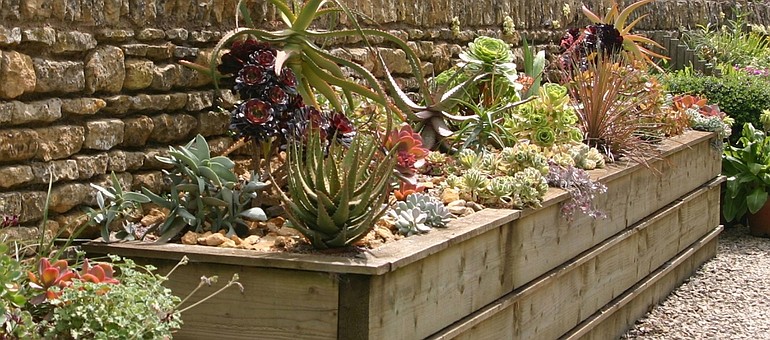Many of my gardening friends have told me that they learned much about designing their overall garden by experimenting with container gardening.
This really is the ideal medium in which to take chances on plant and color combinations. If, by some chance, you don’t like the results of a container planting, you can change it until you are satisfied.
I find myself creating two or three planters at a time so I can play around with a variety of plants before deciding which ones go best together. There are always a few plants that we are not sure would fit into our already established garden style but may be perfect for container culture.
Pots are a great place to try out ornamental grasses. I like the elegant, wistful, Pennisetum orientale Karley Rose and the shorter, grasslike Carex oshimensis Evergold.
Experiment with combining plants with different texture, color and size to see what characteristics certain plants bring out in others. For a perennial planter, the fantastic, yellow-and-green-striped Japanese forest grass — Hakonechloa macra Aureola — is a wonderful choice. Its graceful, slender arching stems give the effect of water moving with the slightest breeze. Add a dwarf heavenly bamboo — Nandina domestica — for height and contrast.
Not every garden has full sun for an extended period every day, and not every seasonal planter needs to be filled with brightly colored, sun-loving plants. One of the favorite cool color containers in my garden sits along a woodland trail in the midst of a shade border. I used a large, earth-toned ceramic planter and planted the solid, reliable Blue Star juniper as the centerpiece. Two vibrant Japanese painted ferns — Athyrium nipponicum Pictum — arch over the sides of the planter, highlighted by the trailing Lamium Beacon Silver.
Know your vines
Different vines cling and climb by different means. Some vines such as Boston Ivy — Parthenocissus ssp. — are self-supporting, producing suckers that cling and emit a gluelike substance to assure they hold fast. Clematis and honeysuckle use tendrils to wrap around a support and hold the plant in place. Vines are beautiful but not every vine is right for every garden.
Most vines look best when trained and pruned. Wisteria needs to be cut back in summer, well before it gets out of hand. It has been known to take parts of a house with it, lifting roof shingles and squeezing fence posts until they snap. Wisteria is a vine that requires a commitment to regular pruning, not only for form, but for maximum flowering.
Some vines look great in summer and awful in winter. Keep this in mind if you are planting a vine in a highly visible part of your garden or an area designed for yearlong interest. Honeysuckle — Lonicera ssp. — is so exquisite in bloom and scent, but can look like a gnarled version of Medusa’s head in winter. These plants are worth growing but must be strategically placed in the garden. Plant them on a strong support, to the side and back of beds and borders.
If you have lost the tags, which tell you which pruning group they fall into, on your plants, especially clematis, monitor the plant through the year to see when it blooms. Spring bloomers flower on the previous year’s growth. Cut these back a month after flowering. Summer- and fall-blooming clematis bloom on wood produced in the spring. Cut these back in late fall after flowering or in early spring, as buds swell.
Water, fertilize
All container plants need attention once the hot, dry weather finally sets in for the summer. It’s important to water containers well enough to keep the soil moist to within an inch of ground level. The simplest test is to stick your finger into the soil. This is more reliable than guessing from the plant’s appearance. If containers are in the open and temperatures stay high, they might require daily watering.
Continue deadheading spent blossoms and remove rangy, unproductive plant growth throughout the growing season. Plants will continue producing new flower heads. Pinch out the flower tips from coleus and other foliage plants to make sure the foliage gets all the benefits of water and nutrition.
Every couple of weeks, mix a liquid fertilizer in with the water used on container plantings. Water flows through the soil and leaches out nutrients, so plant food needs to be replaced throughout the season.
Robb Rosser is a WSU-certified Master Gardener. Reach him at Write2Robb@aol.com.



